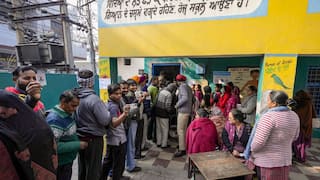From Sex-Education To Therapy For Offenders: Key Takeaways From SC Verdict On Child Pornography
The Supreme Court in a landmark verdict emphasised the need to effectively address the growing number of dissemination and use of child pornography.

The Supreme Court in a landmark verdict emphasised the need to effectively address the growing number of dissemination and use of child pornography. The top court while holding that watching as well as storing child pornographic content is a crime under the POCSO as well as IT Act, has laid down several guidelines and directives for Centre, States, Courts, Police, Schools and Social Media Intermediaries to curb the incidents of child pornography in India.
Here a key takeaways from the landmark verdict by Supreme Court on child pornography.
Clicking A Link And Watching Child Porn Without Downloading Also An Offence
The top court in a detailed verdict has described instances that would qualify as offence under the POCSO and emphasised that mere possesion of such a content is also an offence under POCSO. The court said that mere storage of “child sexual exploitative and abuse material" (child pornography) without deleting or reporting the same would indicate the intention to transmit, which is an offence under POCSO. The court also said merely watching it without download would amount to an offence of "possession" under the POCSO Act.
The court has clarified that not reporting such an incident is also an offence.
Govts Must Create Awareness, Implement Sex Education Programs
The top court that the Centre as well as state governments are responsible for implementing the POCSO Act to prevent such crimes. It issued a slew of suggestions to Centre and state governments. The top court said that governments should ensure implemetation of comprehensive sex education programs that include information about the legal and ethical ramifications of child pornography can help deter potential offenders.
These programs should address common misconceptions and provide young people with a clear understanding of consent and the impact of exploitation, the court added.
Victim Support & Rehabilitation And Therapy For Offenders
The landmark verdict has said that ensuring support services to the victims and rehabilitation programs for the offenders is essential.
"These services should include psychological counselling, therapeutic interventions, and educational support to address the underlying issues and promote healthy development. For those already involved in viewing or distributing child pornography, CBT has proven effective in addressing the cognitive distortions that fuel such behaviour. Therapy programs should focus on developing empathy, understanding the harm caused to victims, and altering problematic thought patterns."
The court further pitched for raising awareness about the realities of child sexual exploitative material and its consequences through public campaigns can help reduce its prevalence. These campaigns should aim to destigmatize reporting and encourage community vigilance.
Coordinated Efforts By Schools, Healthcare Providers, Law Enforcers
The court said that identifying at-risk individuals early and implementing intervention strategies for youth with problematic sexual behaviours (PSB) involves several steps and requires a coordinated effort among various stakeholders, including educators, healthcare providers, law enforcement, and child welfare services.
"Educators, healthcare professionals, and law enforcement officers should be imparted training to identify signs of PSB. Awareness programs can help these professionals recognize early warning signs and understand how to respond appropriately."
The court added that Schools can also play a crucial role in early identification and intervention. Implementing school-based programs that educate students about healthy relationships, consent, and appropriate behaviour can help prevent PSB.
'Child Porn Deprives Victim Of Hope Or Chance To Heal'
The top court noted that a child's victimisation begins with the sexual act, continues through its recording, and perpetuates as photographs and videos that float through cyberspace, freely accessible to anyone who has the ability to surf the internet.
The top court further added that the impact of such continuous victimisation is profound. Any act of sexual abuse inherently inflicts lasting physical and emotional trauma on the child. However, the dissemination of this act of abuse through pornographic material further accentuates and deepens the trauma into a psychological scar.
"The knowledge that their abuse is being watched by countless strangers, sometimes years after the actual event, exacerbates the psychological wounds on top of the trauma that was already induced by the act in the first place.This perpetuating violation deprives the victim of any remaining hope or chance to heal, recover from the abuse and find closure," the judgment read.
Term 'Child Pornography' A Misnomer
The court explained that term "child pornography" is a misnomer that fails to capture the full extent of the crime. It is important to recognize that each case of what is traditionally termed "child pornography" involves the actual abuse of a child. The use of the term "child pornography" can lead to a trivialization of the crime, as pornography is often seen as a consensual act between adults.
The top court said that the term "child sexual exploitative and abuse material" or “CSEAM” more accurately reflects the reality that these images and videos are not merely pornographic but are records of incidents, where a child has either been sexually exploited and abused or where any abuse of children has been portrayed through any self-generated visual depiction.
"The term "child sexual exploitative and abuse material" (CSEAM) rightly places the emphasis on the exploitation and abuse of the child, highlighting the criminal nature of the act and the need for a serious and robust response."
Social Media Intermediaries Must Report Instances Of Child Porn
The top court said that all social media intermediaries must immediately report the offence of child porn to the police. The court said that mere deletion of such content by social media intermediaries is not enough, and they cannot claim exemption from the liability under Section 79 of the IT Act for any third-party information, data, or communication link made available or hosted by it, unless due diligence is conducted by it and compliance is made of these provisions of the POCSO.
"We are also of the view that such due diligence includes not only removal of child pornographic content but also making an immediate report of such content to the concerned police units in the manner specified under the POCSO Act and the Rules thereunder," the top court said.
Trending News
Top Headlines






































